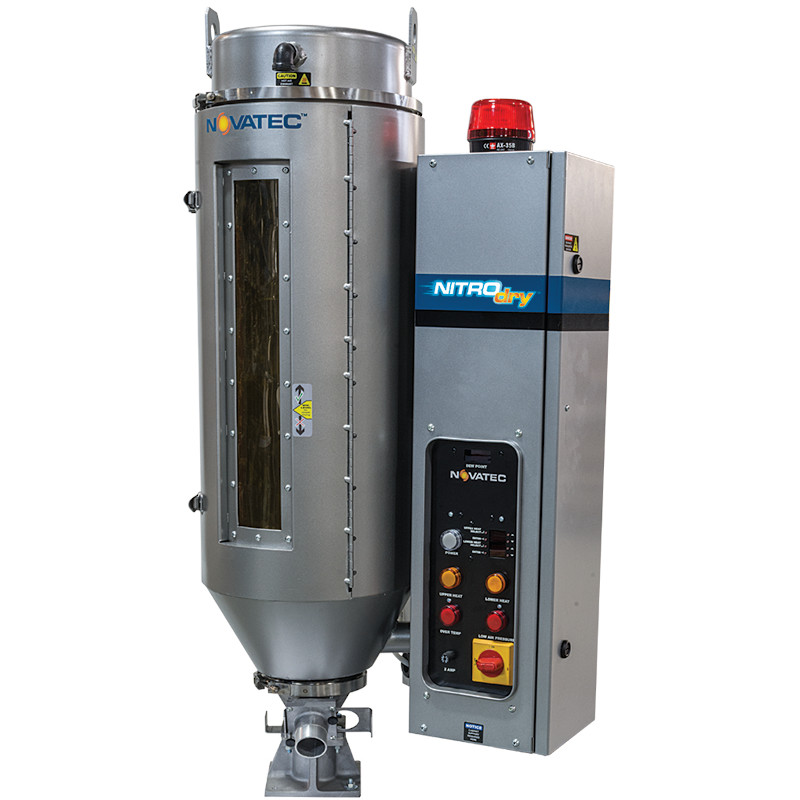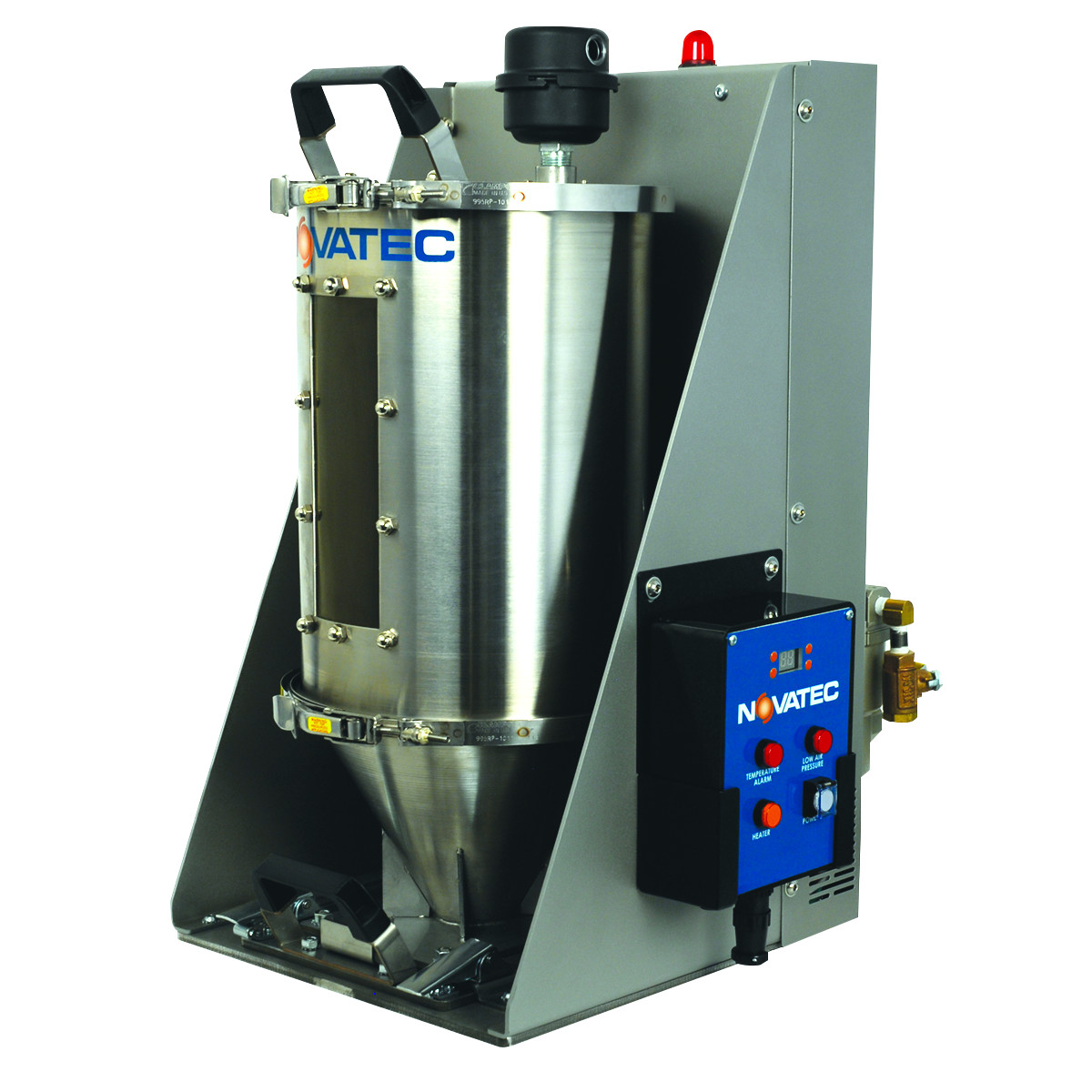Membrane Compressed Air and Nitrogen
Membrane Dryers vs. Compressed Air Dryers
You cannot depend on “hit and miss” drying tactics and expect to produce high quality molded plastic parts.It is easy to get confused about the differences between Membrane Dryers for Drying Plastics and Compressed Air Dryers for Drying Plastics. There are a couple of big differences. For one thing, compressed air dryers typically reduce the dew point of the the incoming air by only 10 to 20 degrees F. That means if the incoming air is at a 40 degree dew point, your plastic pellets will only see “drying air” with a 20 or 30 degree dew point, despite the fact that resin manufacturers specify that most resins be dried by -40 degree dew point air.
That means that in some geographic areas where it is typically humid, these compressed air dryers will not work very well at all.In climates that are typically dry in the winter but often humid during summer months, the compressed air dryer may work OK during the winter but have to be shut down during humid times in the Spring, Summer and Fall on humid days.
Compressed air dryers with a membrane produce -40 degree plastics drying air 24/7/365 regardless of the outdoor humidity.
The other big difference is the comparison of operating costs. Plain compressed air dryers use about 3 times as much compressed air as membrane dryers with a built-in membrane. Even compressed air dryers with add-on membranes use about 2.5 times as much compressed air as membrane dryers with built-in membranes.
You may save some money on the initial purchase of a compressed air dryer or one with an add-on membrane BUT your operating costs will be so much lower with the built-in membrane dryer that over a 10-year period, you will save 10′s of thousands of dollars to dry your plastic resins.










